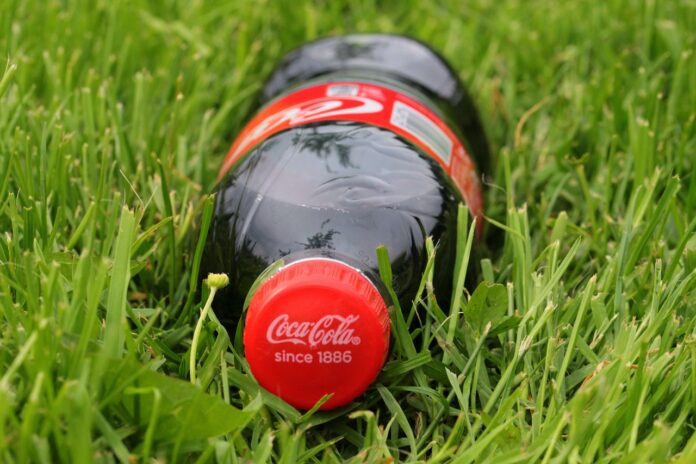Today we have so many things we use every day, and without which we cannot even imagine our lives. Of course, each of these little things represented the invention of their time – and many of these inventions have a very long history. Therefore, let’s go back to the past and let’s take a look at inventions that have unusual and surprising origins.
Inventions Are the Roots of Civilization
Creativity, inventiveness, and a constant desire for progress are what human civilization is pushing forward. Having an idea, and knowing how to realize it – is a true gift. Of course, some inventions were created by mere coincidence, and others, people tried to develop. Some aimed to have the well-being of humanity – while some were abused and used for bad things, such as mass destruction.
Still, what is certain, is that every invention is hiding a story behind it. Some of today’s everyday things were created in the prehistoric period. Others, we connect to ancient civilizations like the Egyptian or Romans. Some things were invented by great scientists like Tesla – and some are the work of curious people, who wanted to make a change. Let’s get back in time and reveal the unusual origin of some inventions we use today in our everyday life.
● Concrete

In the times that we live in, buildings and skyscrapers are growing like mushrooms. Large concrete jungles like today’s New York or other large cities – would probably not exist if we didn’t have the invention which is so common today – and that’s concrete. The appearance of concrete and construction from this material are associated with ancient Romans. They used it more than 2,000 years ago. We can also say that concrete made the architectural revolution during the rule of Octavian August. Although the Roman concrete was not the same as today’s upgraded version – it was enough to resist the time. So today, we have the remains of the Roman aqueducts, as well as buildings that seem almost untouched by the hand of the time.
● Coca Cola

The favorite drink of so many generations. Coca-Cola also experienced several changes and modifications, compared to the time when it was created. The formula for the famous Coca-Cola is still a secret for the public today. However, this drink is one of the first patented drinks, which made this company a lot of money. True, patents are very significant. Although they were protected differently at the time when Coca-Cola was created – their importance is still immeasurable for the inventors, which you can read here.
However, let’s return to the story of Coca-Cola and its original purpose. The purpose of this drink was to wean off morphine. Namely, John Pemberton, who created the formula for this drink, had a problem with morphine addiction. During the war, he was a soldier of the Confederacy, and in the war, he suffered a wound, which caused him to relieve his pain with morphine. That habit soon caused new problems with addiction. Pemberton first created a drink that contained wine, cocaine, and kola nuts – but later, he gave up wine and called this drink Coca-Cola. A little later, this non-alcoholic drink underwent additional changes in the formula until it reached the one we know today – which brought this company to the number 1 position in the non-alcoholic drinks market.
● Toothbrushes

Before the appearance of the first modern toothbrushes, people used plants or chewed various branches of trees – to clean their teeth of deposits and keep their mouths fresh. However, it was around 1400 that the first toothbrush appeared in China. Then, an inventor unknown to us today came up with the idea of attaching boar bristles to a handle made of bamboo wood. We can mark that moment as the appearance of what looked like the first modern toothbrush. Such “toothbrushes” were used until the 30s of the 20th century – when the miraculous toothbrush of Dr. West was promoted for the first time, with the use of nylon tassels.
● A tea bag

Tea trading used to be a very lucrative business. To be honest, it still is today. However, merchants used to struggle with how to get large quantities of tea to the desired destination – and without losses. Packaging was a big problem at that time. And so it would have remained if a New York merchant, Thomas Sullivan, had not come up with an idea it would be much more practical to sell tea in small silk bags. The packaging is safer, the quantities of tea are smaller – and the sale of the product has increased significantly. It turned out that customers had inadvertently dropped full bags into boiling water – and were blown away by the results. That’s how we got tea in the version we still use today.
● Roller Coaster

Who among you has enough courage to embark on an adventure called a roller coaster? Many of us still lack courage. That is not surprising because today’s roller coasters are extremely fast, and the hydraulics that moves them is so powerful. However, the history of this invention, which today we use for fun in amusement parks, was way different before. The intention of the inventor, LaMarcus Adna Thompson, was for sinners and fallen Christians to repent of their sins. Seeing that the world was changing its face from the end of the 1880s, this devoted Christian inventor wanted to offer people a different kind of entertainment.
Something that will entertain them and get their adrenaline going – but keep them away from dirty saloons and brothels. After visiting mining towns, inspired by mining wagons – he came up with an idea and designed the first roller coaster. The first official roller coaster slide started working for entertainment on Coney Island – and today, this is one of the most popular forms of entertainment for all adrenaline junkies across America and the world.
● The Internet

The internet, an integral part of modern life, has a history rooted in the military. Its origins can be traced back to the Cold War era when the U.S. Department of Defense sought a robust and decentralized communication system that could withstand a nuclear attack. The result was ARPANET, a network of computers designed to share information. In 1969, ARPANET achieved its first successful message transmission between two distant computers, marking the birth of the internet.
Over time, ARPANET evolved into the internet we know today. Its expansion into academia and industry paved the way for the World Wide Web, introduced by Tim Berners-Lee in 1989. The WWW transformed the internet into a user-friendly platform, enabling the sharing of text, images, and multimedia content. This innovation revolutionized communication, research, commerce, and entertainment on a global scale.
● Penicillin

Penicillin, a lifesaving antibiotic, owes its discovery to a serendipitous event. In 1928, Scottish biologist Alexander Fleming was conducting experiments with Staphylococcus bacteria when he returned from vacation to find that a mold called Penicillium notatum had contaminated his petri dishes. To his surprise, he observed that the bacteria around the mold had died, while those further away remained unharmed.
Fleming identified the mold as the source of a substance that could combat bacterial infections. He named it penicillin and began conducting experiments to harness its potential. This chance discovery initiated the development of antibiotics, which transformed medicine by providing effective treatments for bacterial diseases. Even if you have a revolutionary invention as penicillin you should always check for more details before proceeding.
● Post-it Notes
Post-it Notes, those ubiquitous sticky pieces of paper, have a unique backstory. In 1968, chemist Spencer Silver was attempting to create a strong adhesive but accidentally developed a weak one instead. This adhesive had a remarkable property: it could stick to surfaces but could also be easily removed without leaving a residue.
Years later, another scientist at 3M, Art Fry, remembered Silver’s adhesive when he faced the problem of keeping bookmarks in his choir hymnal. Fry saw the potential to create a useful product, and together with Silver, they developed Post-it Notes. Initially, they faced skepticism from colleagues, but when Post-it Notes hit the market in 1980, they became a sensation, revolutionizing office organization and communication.
● Velcro
Velcro, the hook-and-loop fastening system used in various applications, has a story of nature-inspired innovation. Swiss engineer George de Mestral came up with the idea for Velcro after a hunting trip in the Alps. He noticed burrs sticking to his clothing and his dog’s fur. Intrigued by this phenomenon, he examined the burrs under a microscope and discovered tiny hooks that attached themselves to loops.
Inspired by nature’s design, de Mestral developed a synthetic fastener with tiny hooks on one side and loops on the other. He named it Velcro, a portmanteau of “velvet” and “crochet” (the French word for hook). Velcro’s versatility led to its widespread use, from clothing and footwear to aerospace and healthcare. Having a similar idea? Click here first.
● Microwave Oven

The microwave oven, a kitchen staple for quick heating and cooking, had its beginnings in radar technology during World War II. Percy Spencer, an engineer at Raytheon Corporation, was working on radar-related projects when he noticed something unexpected. While testing a magnetron (a vacuum tube used in radar systems), he realized that a candy bar in his pocket had melted.
Intrigued by this accidental discovery, Spencer conducted further experiments with food, exposing it to microwave radiation. He observed that microwaves could cook food quickly and evenly. In 1947, Raytheon introduced the first commercial microwave oven, known as the Radarange. Initially, these ovens were massive and expensive, but over time, they evolved into the compact and affordable appliances found in households worldwide.
The Bottom Line
As we already know, many inventions, starting from the wheel in prehistoric times to the wireless communications of modern times – are widely used today. Today we experience them as ordinary things, but they were once the hits of their time. We have looked only at a few things that are so common in the modern times in which we live. But as we said, every invention has an unusual story behind it, and there are many of them. These were just some.








